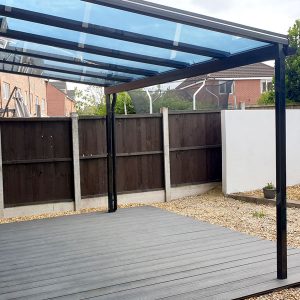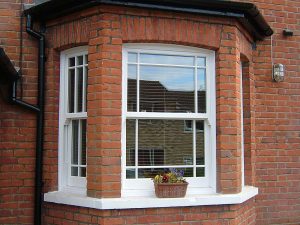A cold house can feel uncomfortable, especially during the winter months. Whether your home has poor insulation or you’re just trying to keep heating costs down, there are several ways to warm up a cold house effectively. Here’s a guide to help you create a warm, cosy environment without breaking the bank.
1. Improve Insulation
One of the most effective ways to keep your home warm is by improving insulation. Heat can escape through poorly insulated walls, floors, and ceilings, making it harder to maintain a comfortable temperature.
How to Improve Insulation:
- Loft and attic insulation: Insulating your loft or attic can significantly reduce heat loss through the roof, where a lot of warmth tends to escape.
- Wall insulation: Depending on your home’s construction, you can add cavity wall insulation to trap heat within the walls.
- Floor insulation: Insulating under wooden or laminate flooring helps retain heat and prevents cold drafts from seeping through.
By boosting insulation, your home will retain warmth longer, reducing the need to rely on heating systems.
2. Seal Drafts Around Windows and Doors
Drafty windows and doors are common culprits for heat loss in homes. Sealing these drafts can prevent cold air from entering and keep your home warmer.
How to Seal Drafts:
- Install weatherstripping: Use weatherstripping around windows and door frames to block out drafts.
- Use draft excluders: Place draft excluders at the base of doors, especially those leading outside or to unheated rooms.
- Apply caulk: Fill any gaps around windows or doors with caulk to prevent air leaks.
Even small gaps around windows and doors can lead to significant heat loss, so sealing these up can make a big difference.
3. Upgrade Your Heating System
A reliable heating system is essential for keeping your home warm. If your current system isn’t performing well, it may be time to upgrade or service it.
Steps to Improve Heating Efficiency:
- Service your boiler: Ensure your boiler is regularly serviced to maintain efficiency and prevent breakdowns.
- Consider a smart thermostat: Smart thermostats allow you to control your heating remotely, making sure the house is warm when you need it, without wasting energy.
- Radiator upgrades: Install thermostatic radiator valves (TRVs) to control the temperature in individual rooms and balance heat distribution.
If you’re using an older heating system, upgrading to a more efficient model can significantly improve warmth and reduce heating bills.
4. Use Rugs and Curtains
Simple changes like adding rugs and heavy curtains can help reduce heat loss and make your home feel cosier.
Tips for Using Rugs and Curtains:
- Lay down rugs: Wooden or tile floors can be cold underfoot, especially in winter. Adding rugs to these areas provides insulation and prevents heat loss through the floor.
- Hang thick curtains: Thick, insulated curtains can block cold drafts from windows, especially at night. Make sure to close them as soon as it gets dark to trap heat indoors.
Rugs and curtains are an inexpensive way to add warmth to your home while enhancing the aesthetic of your living space.
5. Maximise Sunlight During the Day
Natural sunlight is a free and effective heat source that can help warm your home, especially during the colder months.
How to Maximise Sunlight:
- Open curtains during the day: Make sure to open curtains and blinds in the morning to let in as much sunlight as possible.
- Remove obstacles: Keep windows clear of any obstructions, such as large furniture, to allow sunlight to fully enter the room.
By harnessing natural sunlight, you can reduce the need for artificial heating during daylight hours.
6. Use Space Heaters Strategically
If you don’t want to heat the entire house, using space heaters can provide targeted warmth in the rooms you use most often. However, it’s important to use them wisely to avoid high energy costs.
How to Use Space Heaters Effectively:
- Place in commonly used rooms: Use space heaters in rooms where you spend the most time, such as the living room or bedroom, to avoid heating unused spaces.
- Keep doors closed: Keep doors closed when using space heaters to trap the heat in the room.
- Turn off when not needed: Always turn off space heaters when leaving the room or going to bed to save energy and prevent overheating.
Space heaters are a quick fix for warming specific areas of your home without having to rely on central heating.
7. Reverse Ceiling Fans
Ceiling fans can be used in both summer and winter. In the winter, reversing the direction of the fan blades helps to push warm air down from the ceiling, improving heat circulation.
How to Reverse a Ceiling Fan:
- Set the fan to rotate clockwise: Most ceiling fans have a switch that changes the blade direction. Set the fan to rotate clockwise during the colder months.
- Use on a low setting: Keep the fan at a low speed to gently circulate warm air without creating a cooling breeze.
This simple trick helps redistribute warm air that gathers near the ceiling, keeping your living space comfortable.
8. Block Unused Chimneys and Fireplaces
If you have a fireplace that you don’t use regularly, it can be a source of heat loss. Cold air can flow in through the chimney, while warm air escapes.
How to Block Chimneys and Fireplaces:
- Use a chimney balloon: A chimney balloon can be placed inside the flue to block drafts when the fireplace isn’t in use.
- Install a fireplace cover: Consider a fireplace cover or screen to prevent cold air from entering and keep warm air inside the room.
Blocking unused chimneys and fireplaces can drastically reduce drafts and make your home more energy-efficient.
9. Layer Up With Warm Clothing and Blankets
Sometimes the simplest solutions are the most effective. Wearing extra layers and using blankets can help keep you warm without needing to constantly crank up the heating.
Tips for Staying Warm:
- Wear thermal clothing: Invest in thermal clothing, socks, and slippers for those particularly cold days.
- Use blankets and throws: Keep cosy blankets in living areas and bedrooms to layer up when you feel cold.
By dressing warmly and using blankets, you can stay comfortable without relying too heavily on your heating system.
Final Thoughts
Warming a cold house involves a combination of improving insulation, preventing drafts, and using heating systems efficiently. Simple changes like adding rugs, using space heaters, and maximising sunlight can have a significant impact on your home’s warmth. With these tips, you can create a comfortable and cosy living space, even during the coldest months.












